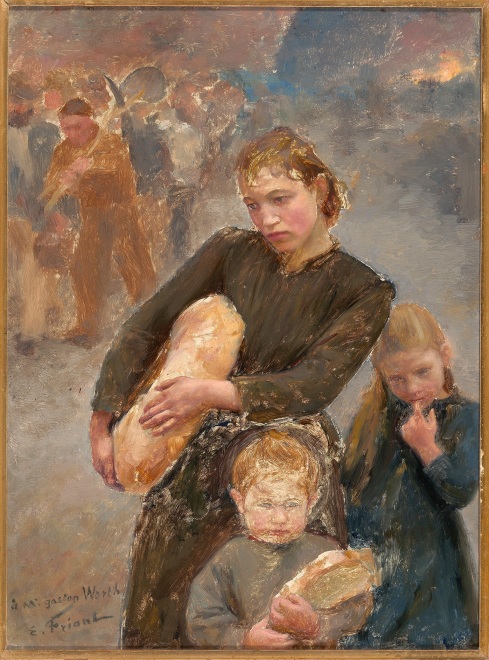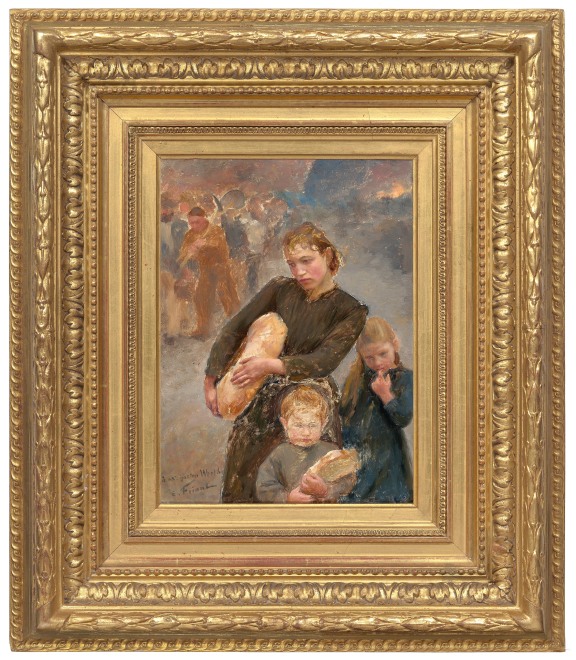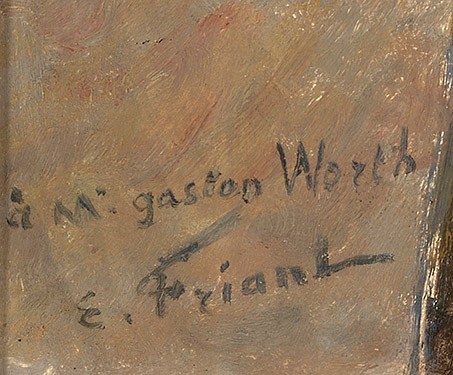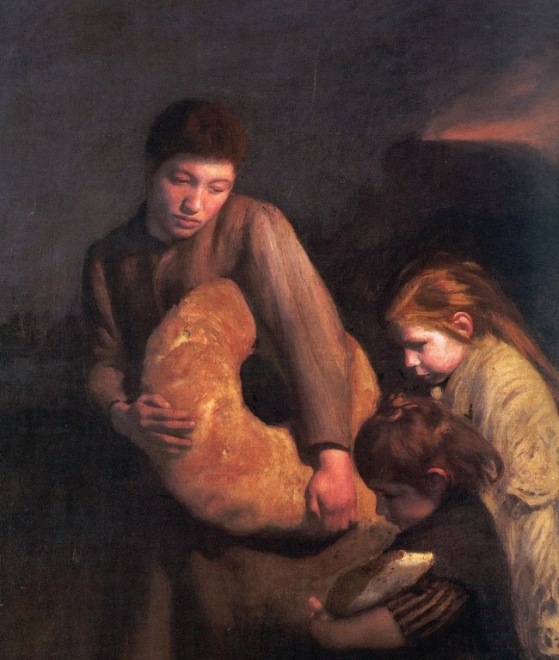In 1894, Friant painted one of his most interesting and innovative works, and yet it is one of his least well-known. (Toul, Musée d’Art et d’histoire, fig, 1). Titled Le Pain (The Bread)
Our painting is a previously unknown oil study for Friant’s final work.
Provenance
Private collectionCatalogue note
In 1894, Friant painted one of his most interesting and innovative works, and yet it is one of his least well-known. (Toul, Musée d’Art et d’histoire, fig, 1). Titled Le Pain (The Bread) because of the imposing “couronne” of bread clutched under the arm of the central figure, a working-class mother with her two daughters, the painting is more than anecdotal genre and likely verges on offering a commentary on some of the most pressing social issues of the time. The red sky on the horizon speaks of an industrial landscape. The 1894 date of the painting corresponds to the unrest among workers in France at the time, which led to such events as the strikes at the Carmaux mines in the early 1890s. During extended strikes, the workers and their families often suffered from hunger; and what could be more symbolic to their plight than Friant’s giant loaf of bread?
Our painting is a previously unknown oil study for Friant’s final work (one other known study exists, sold Nancy, May 25, 2013, lot 12). Like any preparatory study, our painting offers insight into the artist’s creative process – how the composition changes and evolves, what the artist chooses to retain or omit. Here, the young girls face the viewer instead of being shown in profile while the gaze of the mother is similar to her pensive expression in the final painting. The loaf of bread, central to the subject, is still an important feature but does not reach the epic proportions of the “couronne” in the Toul work. What Friant chose to omit in the final work is the group of workers that he has included in the background of the study. Walking with the tools of their trade slung over their shoulders, they move away from the glowing light (perhaps the mine?) seen off in the distance. This omission in the final work is important as it eliminates the anecdotal subject and replaces it with a subtle, but much more powerful sentiment.
Friant dedicated our painting to Gaston Worth, the son of famed French fashion designer, Charles Fredrick Worth.








